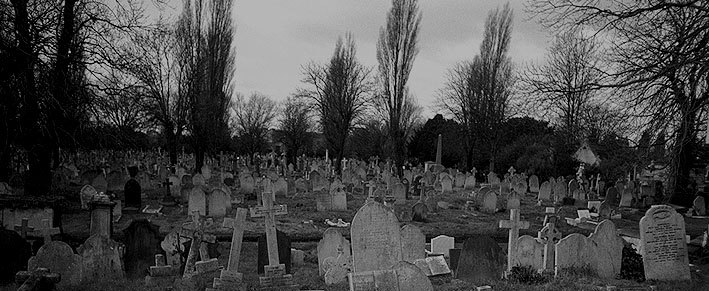
Kensal Green Cemetery, London

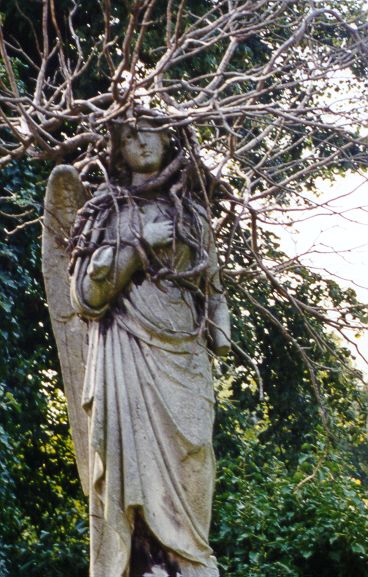 |
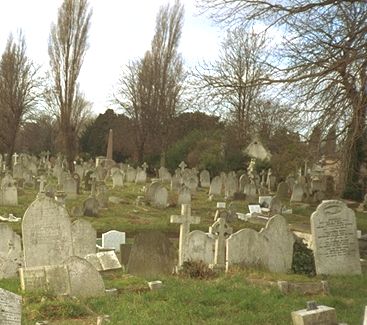 As churchyards in London became overcrowded with bodies in the early 19th century, locations just outside of London were selected to bury the dead. Kensal Green Cemetery was one of the first. It was licensed by an Act of Parliament in 1832 and would soon turn into such a fashionable place to be buried that Augustus Frederick, Duke of Sussex, son of king George III, found his last resting place on the cemetery in 1843. Many other illustrious persons were buried at Kensal Green and below we'll have a look at some of their graves. |
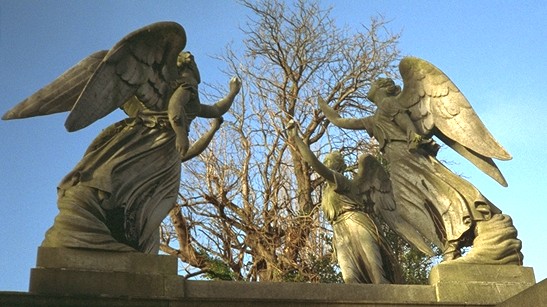 The angels at Mary Gibson's grave. The two hands that were missing were recently found by one of the touring guides, after some serious digging near the monument. There are plans to restore this monument to former glory if time and means to do so can be found. (Thanks to Kate Allenby for additional information) |
As on many other cemeteries, some of the tombs on Kensal Green are really pompous. In most cases the inhabitants are long forgotten, but the tombs remain. A striking example is Mary Eleanor Gibson, who was born in 1854 and died in 1872. She's a complete unknown, but the angels on top of her large tomb are really magnificent and fully justify the moment one pauses to admire them... |
![[IMAGE]](kensal2.jpg) John Hobhouse's tomb. |
Near Mary, far more famous residents can be found. Particularly close to her are the statesman William Molesworth (1810-1855) and the painter William Mulready (1786-1863). A little further we can find John Hobhouse (1786-1869), also known as Lord Broughton and enjoying some literary fame as the friend with whom Lord Byron toured the Continent as far as Turkey in 1809. |
| Other illustrious inhabitants of Kensal Green include William Makepeace Thackeray (1811-1863), Charles Babbage (1791-1871) and Leigh Hunt (1784-1859). Hunt was a radical who knew both Byron and Shelley. He served two years in prison for insulting the Prince Regent and was visited there by Byron and others. Hunt had a large family and was always short of money. |  |
| One person, who was very famous in his time but by his own explicit instructions was buried in a simple fashion, was Wilkie Collins (1824-1889), author of magnificent books including The Woman in White (1860), Armadale (1866) and The Moonstone (1868). |
![[IMAGE]](kensal4.jpg) |
 |
| Wilkie Collins' simple grave. | The Woman in White was published in 1860 and a great success for Collins. |
| Almost forgotten for a very long time, but slowly creeping back in the spotlights is painter John Waterhouse (1849-1917), creator of beautiful paintings like The Magic Circle (1886), The Lady of Shalott (1888, different version 1894) and The Siren (1900). |
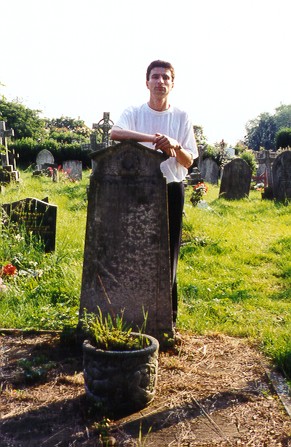 Not as fantastic as the paintings: John Waterhouse's tomb. (Never mind the guy behind it) |
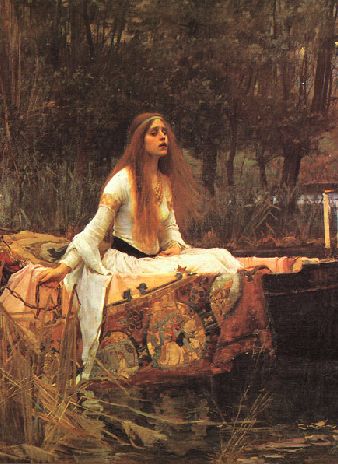 The Lady of Shalott by John Waterhouse (detail, 1888, The Tate Gallery, London). |
 |
Some of the graves are hard to find and Fanny Kemble's is one of them. This daughter of the celebrated Shakespeare actor Charles Kemble was born in 1808 and made her debut at Covent Garden in 1829. She soon found herself famous as well and toured America with her father. Later in life she lectured on Shakespeare and wrote a novel, an autobiography and some poetry. |
| Thomas
Jefferson Hogg was a friend of the poet Percy
Bysshe Shelley back in England. Jane Williams befriended Shelley and his wife Mary in Italy, where she also met Lord Byron. After the poet drowned in 1822 together with Jane's partner Ned Williams, Jane went back to England and moved in with Hogg. She bore him two daughters. Hogg died in 1862 and Jane lived on until 1884, outliving Shelley for 62 years. |
|
|
Also
at Kensal Green:
|
||
| Now strolling on a cemetery for a long time is a sufficient reason to get dead tired. Just one more reason why Kensal Green is such a fine place to be is the nice chair that was put there in memory of Henry Russel (1812-1900), composer of 800 or even more songs. The picture shows yours truly, who's still human after all and enjoyed a short but comfortable break there. |
![[IMAGE]](kensal1.jpg) Well, yes, sitting there actually took place in December 1993... |
...but
after closing
one's eyes for what seemed to be only a second it's suddenly 1997.
Quite terrifying,
isn't it? 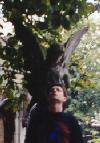 |
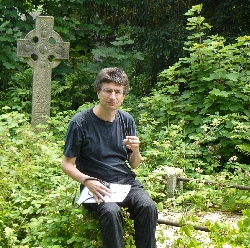 |
Actually, things can get even worse. Sitting at the grave of Annabella Milbanke (Lady Byron) the last visit to Kensal Green seemed like yesterday, but almost twelve years had passed since then. This was in the summer of 2009. |
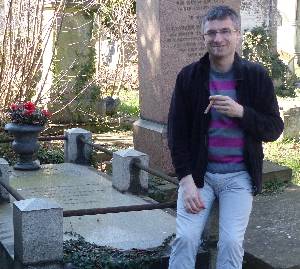 |
And suddenly ones hair turns grey on a nice day n the spring of 2016. I'll be back. |
Return
to The Page of The Dead
|
Disclaimer:
Some
links from the web to this site seem to suggest that this is the official
site of Kensal Green Cemetery. It was indeed the very first page on
Kensal Green Cemetery on the web back in 1993, but it is by no means
an official one. It is not possible to obtain any information from
the records of the cemetery from here. |